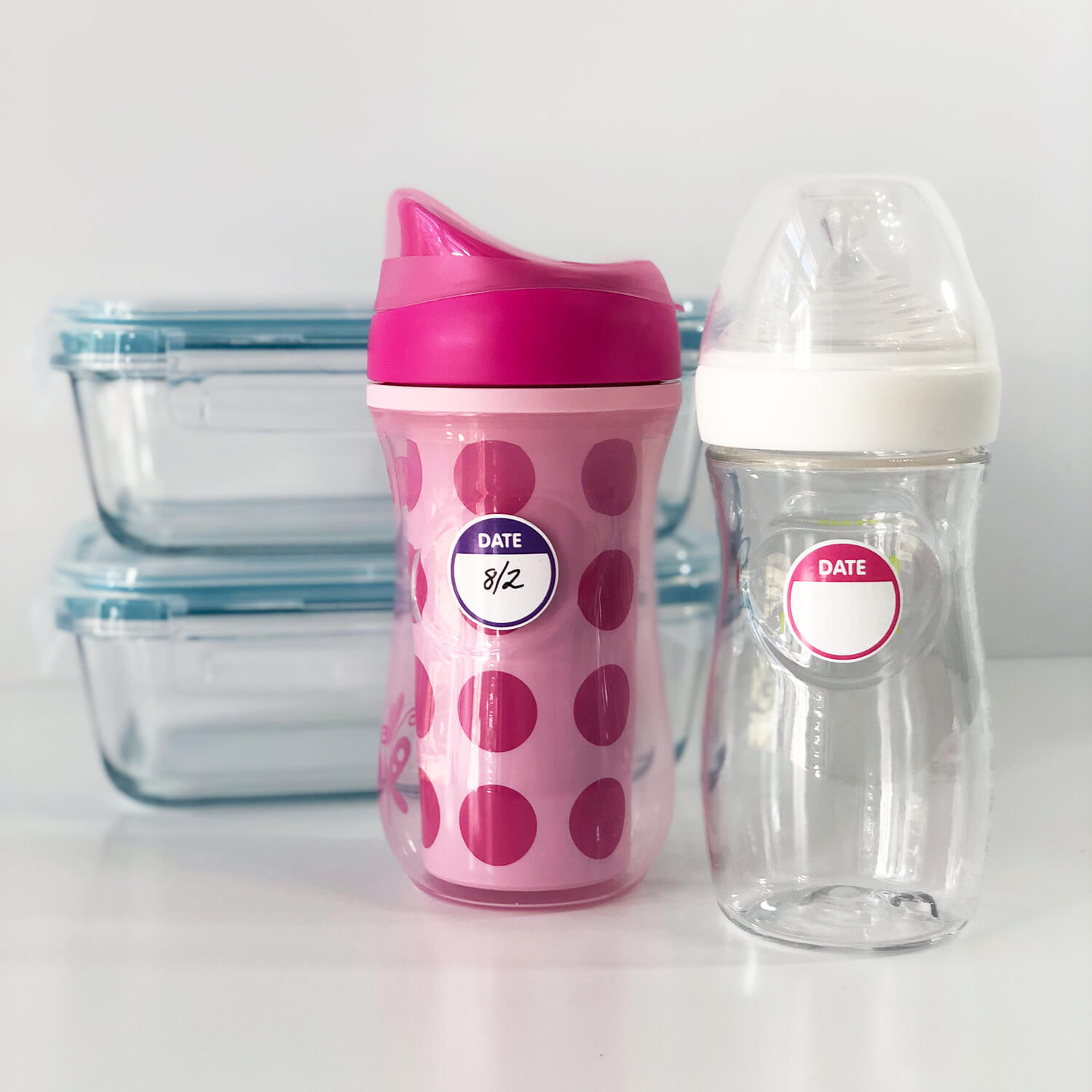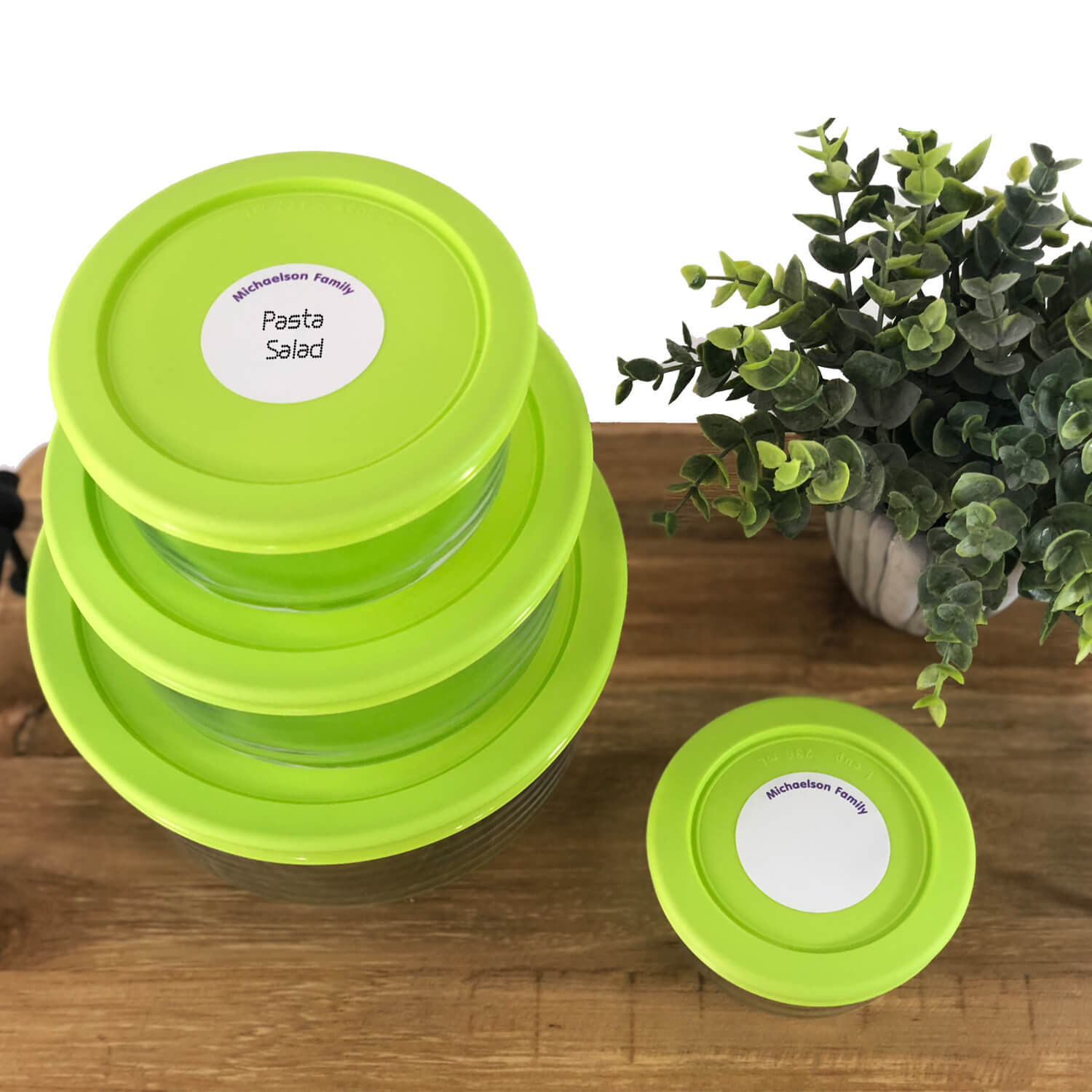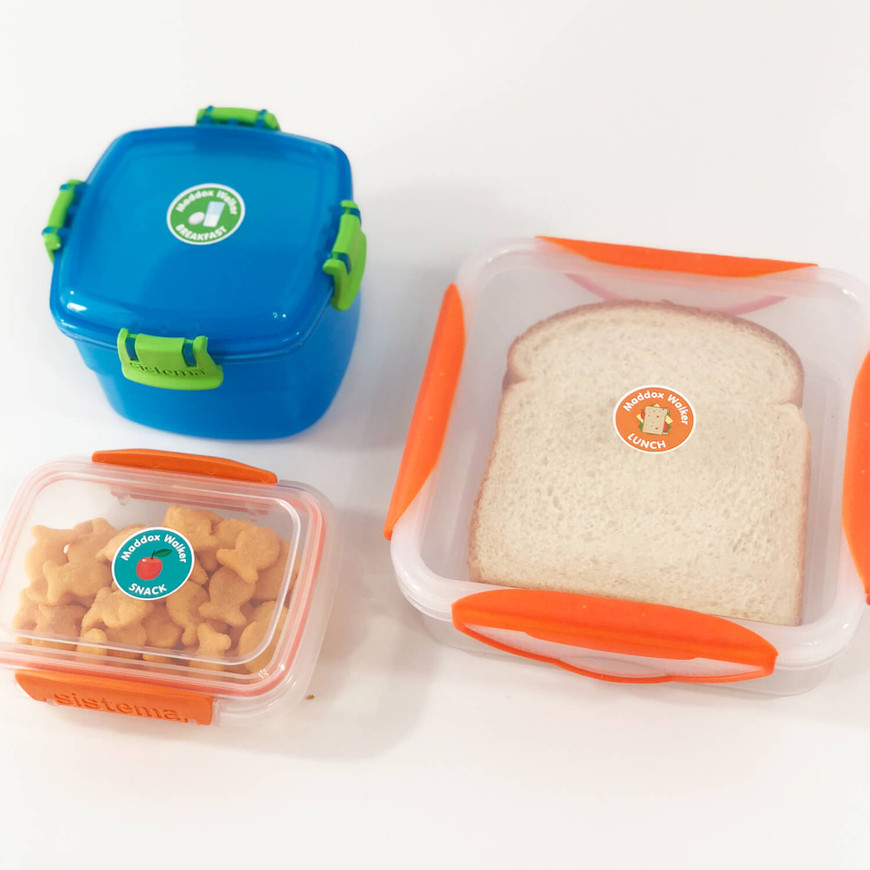Healthy lunch tips are about making meals that focus on nutrition with flavor and convenience coming in a close second. Add a source of protein such as grilled chicken or beans. Pair them with whole grains like brown rice or quinoa, and leafy greens or colorful vegetables for vitamins A and C.
Planning out meals ahead of time saves time during the week, as well as keeps you on track to eat healthier options. Using portioned containers helps control servings and adding yummy healthy fats such as avocado or nuts increases flavor and fullness.
Water or unsweetened tea beats juice or soda any day. Simple swaps go a long way, like choosing whole-grain bread over white. Follow these simple tips to eat a healthier lunch without spending any more time or energy.
Importance of Meal Prepping
Meal prepping takes the stress out of your week. Plus, it can help you eat more mindfully. So get your meals prepped, plan ahead and enjoy!
With this proactive approach, you ensure you’re set up to make healthier food choices, save time, and save money. This lifestyle habit isn’t just about convenience. Meal prep encourages more consistent and less wasteful habits, and provides a higher level of control over exactly what you’re putting on your plate.
Benefits of Planning Ahead
Not only does planning your meals in advance save time, but it eliminates decision fatigue that can occur on busy weeknights. Rather than rushing around trying to decide what to eat you’ll have balanced, nutrient-rich meals and snacks prepped and waiting for you.
This foresight removes the last-minute scramble and helps boost your mental health by creating a calmer daily routine. Keeping per-portioned meals prevents eating more than you should. This helps you stay focused on your health goals and helps prevent you from overeating or wasting food.
How Meal Prepping Saves Time
Meal prepping saves you time in the kitchen by batching tasks. Batch-cook some grains, like quinoa or brown rice. Cook proteins such as chicken breasts in bulk to save yourself hours during your work week.
Pre-chopped veggies and bagged salad greens take the time out of meal prep even more. Setting aside just one or two days—maybe Sunday afternoons—to meal prep creates a system that helps ensure your week continues to flow smoothly.
Role in Maintaining Healthy Eating Habits
Meal prepping builds on that mindful eating, because it helps to remove the bad temptations. Vibrant, veggie-packed dishes and hearty whole-grain bowls help you stay on track with your dietary commitments.
Keep them on hand in your refrigerator for quick, tasty, and nutritious meals! Whip up a batch of snacks, such as hummus and veggie sticks, so you have crunchy and creamy, satisfying options when cravings hit.
With a bit of variety, such as switching between different stir-fries and different grain salads, boredom won’t even be a concern.
Key Components of a Balanced Lunch
Eating a balanced lunch will ensure that you have the energy you need and are satisfied for the rest of the day. By adding foods from multiple food groups, you’ll make your meal not only healthy, but delicious and filling. A balanced lunch should contain all three macronutrients: protein, carbohydrates, and fats.
Be sure to include lots of fruits and vegetables to provide important vitamins and fiber! Here’s how to assemble a lunch that covers all your bases.
Importance of Protein Sources
Protein helps maintain your energy level and keeps you satisfied longer, too. Grilled chicken, turkey slices, and hard-boiled eggs can all make great options and are super simple. Plant-based proteins are ideal—lentils, chickpeas, or tofu are all excellent options, and they can help with the goal of reducing meat consumption.
For something different, switch Greek yogurt for cottage cheese or a small handful of nuts. Adding protein to your lunch balances blood sugar levels and helps you stay alert for hours.
Adding Whole Grains for Energy
Whole grains deliver longer-lasting energy and are good for your tummy, too. Brown rice, quinoa, and whole-wheat bread are all great pantry staples. Experiment with folding quinoa into a salad, using whole-grain tortillas to make wraps, or serving robust soups with whole-grain crackers.
Unlike refined grains, whole grains are loaded with fiber, which supports satiety and keeps things moving along in your digestive tract.
Including Fresh Fruits and Vegetables
Filling half your plate with colorful produce is one of the easiest ways to up your meal’s nutrient profile. Seasonal options—spinach, kale, or carrots—add crunch and color, while apples or berries lend natural sweetness.
Packed with fiber, these ingredients support digestion and help you feel full longer.
Healthy Fats for Nutrition and Flavor
Healthy fats such as avocado, olive oil, and seeds contribute rich flavor and nutrients to a balanced lunch. They promote brain health and hormone balance, and they enhance the flavor of meals.
Layer sliced avocado on sandwiches or drizzle olive oil on roasted vegetables. Combine with moderation to prevent added calories.
Practical Meal Prep Tips
Smart meal prep begins with having the proper tools, meal prep space, and mindset. Get your kitchen in order and start planning ahead to make packing a lunch every day a breeze. Stay creative with multi-purpose ingredients and make healthy, exciting meals!
Here are some practical tips to make meal prep an easy and enjoyable every day practice.
1. Plan Weekly Menus in Advance
Planning a weekly menu will not only save you time and stress, but make sure you have a little variety! If this is all new to you, begin by prepping meals for only 2-3 days, then work your way up to a week.
Plan your meals around what’s in season! Use seasonal produce to your advantage. In the fall use fresh squash, in the summer use berries to add flavor and nutrition to meals.
Flexibility is important—make sure you are ready to pivot when things change last minute or you simply get a new craving. Use a wall calendar or apps on your mobile device will help give a visual.
These tools and resources will help you efficiently plan and organize your grocery list.
2. Use Portion-Controlled Containers
Using portion-controlled containers take the guesswork out of how much to eat and help you avoid mindless snacking. I find that clear containers are particularly useful for being able to instantly tell what’s in a meal, and stackable designs help maximize space in your fridge.
Pack sauces/dressings in small containers, main dishes in bigger ones. Containers are best labeled right after packing to avoid confusion or misplaced meals. Bento Boxes offer the best way to pack a healthy and portion-controlled meal, and using OmieBox UP Name Tag Labels make sure that everyone gets the correct meal!

3. Batch Cook Ingredients for Versatility
Batch cooking does some of the heavy lifting for you while giving you flexibility. Things like roasted chicken, rice, or beans can be repurposed in several different meals.
Make a big batch of bolognese sauce or a veggie stir fry and freeze the leftovers in individual servings. Pair these batch-cooked staples with a fresh salad base or some chopped fruit for a different meal every day of the week.
4. Store Ingredients Properly for Freshness
Whether you’re using them today or in a week, proper storage extends the life of your ingredients. Store perishable food in airtight containers, and use a label to write the date so you know how long it’s been, and using Write-On Date Labels makes that so much easier and stress free.

Choose clear containers. Being able to see what’s inside helps you eliminate food waste in your meal prep. Allocate time after shopping to wash greens or chop vegetables for convenience.
5. Label Lunch Containers for Easy Access
Label your containers to make cooking easy. Labels that are durable and waterproof guarantee they’ll remain clean and readable through it all. Write-On Labels are not only erasable, long lasting, waterproof, dishwasher safe, microwave safe, and freezer safe, but they are so cute! They also come in so many different sizes and styles, that everyone in your family will love them!

Personalize with a name or cute graphic, and include important details like ingredients and when to prepare them. This simple step will help make mealtime more pleasant and productive.
Healthy Lunch Ideas
A healthy lunch doesn’t only keep you energized through the afternoon—it can be one of the best parts of your day. By emphasizing variety, big flavors, and uncomplicated cooking, you’ll be able to make meals that are as satisfying to eat as they are to prepare. Here are some simple ideas and tips to help inspire your next school lunch.
Creative Sandwich and Wrap Options
Give your current sandwich game a makeover with these creative new fillings. Try roasted vegetables, hummus, or avocado with lime and cilantro.
These hearty sandwiches, full of fiber and healthy fats, go great with fresh fruit for a well-balanced meal. For wraps, use whole-grain tortillas or lettuce leaves with grilled chicken, quinoa, or black beans.
Spreadable options such as pesto, tzatziki, or a spicy mustard can give it a kick of flavor. Keep in mind that wraps or sandwiches should be assembled on the same day to maintain freshness.
Colorful and Nutritious Salad Bowls
Salads are perfect when you stack greens, grains, and proteins. A salad of quinoa, packed with both fiber and plant-based protein, is another favorite.
Toss with seasonal veggies, nuts, and a light vinaigrette. Fresh herbs, such as cilantro or basil, add a punch of flavor, and dressings bring it all home. Using grains or beans as a base makes salads hearty.
Hearty Grain Bowl Combinations
Grain bowls are super versatile! Pair brown rice, farro, or couscous with roasted vegetables and a protein such as chickpeas or grilled salmon.
Top with crunch. Add some pumpkin seeds or sliced almonds, then drizzle with tahini or yogurt-based dressings for extra creaminess. These bowls are perfect for any dietary need or taste.
Wholesome Soups and Stews
Healthy homemade soups are filling and comforting, and you can make a huge pot in one go. Wholesome ingredients such as lentils, sweet potatoes, and kale make for filling recipes that freeze and thaw beautifully.
Seasonal vegetables help increase nutrition and flavor, making soups a convenient, filling lunch option.
Quick Noodle-Based Dishes
Noodles are easy to cook, adaptable, and safe. Quick soba or whole-grain noodles tossed with peanut sauce and steamed broccoli is a healthy meal made in less than 30 minutes.
Add-ins such as shredded carrots, tofu, or shrimp boost flavor and texture. Try these zucchini noodles with peanut sauce for a fresh, healthier option.
Lunch Ideas for Special Diets
Whether you’re making lunches for special diets or just trying to be more inclusive and creative in your meal planning, here are some ideas. Accommodating dietary restrictions means everyone feels welcomed and has a delicious meal that works for them.
Try out different new ingredients, and tell us about the recipes that inspire you! This approach encourages healthy eating as a fun activity and fosters community spirit.
Vegan and Vegetarian-Friendly Options
Quinoa salads, full of fiber and protein, are a great option. Mason jar salads are another great vegan, portable meal.
Increase your protein by tossing roasted chickpeas into wraps or salads. You can prep falafel of choice ahead of time and use it throughout the week for a delicious, nutritious, filling option.
Balancing flavors and textures is really important in meals that are vegan. Combine smooth hummus with crisp vegetables or old-world grains such as farro for an adventure on your plate!
The chance to explore international cuisines, whether it’s an Indian curry or Mediterranean dish like tabbouleh, can be more enticing.
Gluten-Free Lunch Suggestions
Preparing gluten-free meals is easy once the proper ingredients are on hand. Gluten-free grains such as quinoa or rice can be added for a quick salad or stir-fry.
Experiment with quick fixes such as turkey lettuce wraps, sweet potato bowls, or zucchini noodles with pesto. As always, be sure to read labels to make sure products are certified gluten-free.
Trying new recipes, such as making your own almond flour tortillas or cauli-crust pizza, can help keep things exciting and fun.
Low-Carb and Keto Choices
The key to low-carb lunches is making them hearty and tasty. Cauliflower rice and zucchini noodles are easier, versatile substitutes for grains.
Keto-friendly ingredients such as avocado, almonds, and cheese provide healthy sources of fat. Meals such as chicken salad lettuce wraps or egg muffins can be meal prepped in advance to make things easy.
Making sure to include healthy fats will help keep energy levels up and make kids feel fuller longer.
Allergy-Safe Meal Ideas
Making safe options for kids with allergies means an intentional effort in ingredient selection. Whole foods such as fruits, veggies, and proteins lower the risk of cross-contamination.
Think sunflower butter and banana sandwiches, dairy-free pasta salads, or grain bowls with roasted vegetables. Being open about diet restrictions and requirements encourages everyone to feel included when it comes to sharing meals.
Tips for Packing Nutritious Lunches
Packing a nutritious lunch is more than just throwing a few things in a bag. By emphasizing balance, variety, and practicality, you can set yourself up to serve meals that are nutritious while being fun.
Here are some simple tips to pack a nutritious lunch in no time.
Balance Flavors and Textures
Pairing complementary flavors and interesting textures makes for a meal that’s filling and will have you eagerly anticipating lunchtime. Combine creamy foods such as hummus or avocado with crunchy foods, such as carrots, celery or whole grain crackers.
Include savory proteins such as grilled chicken or hard-boiled eggs to your dish. Next, add some sweetness with fresh fruit like berries or apple slices.
Here’s a simple flavor profile checklist:
-
Savory: Lean meats, cheese, or seasoned tofu
-
Sweet: Fruits, dried cranberries, or a drizzle of honey
-
Crunchy: Nuts, seeds, or crisp vegetables
-
Creamy: Yogurt, nut butter, or guacamole
Be sure to re-season with salt, pepper, or fresh herbs to really brighten the dish.
Keep Meals Colorful and Appealing
Colorful and artfully arranged meals are not only prettier to look at, they may increase appetite and enhance the eating experience. Add in a rainbow of colors—think spinach, cherry tomatoes, bell peppers, purple cabbage, and orange slices.
Consider a bento box or container with dividers to keep your lunch neat and tidy. This ensures that you’ll make your meal satisfying and fun to eat!
Finish with garnishes. A final touch of a sprinkle of sesame seeds or fresh herbs can really make a dish pop!
Avoid Over packing or Wasting Food
Know your portion sizes to help prevent over packing and wasting food. Get creative with leftovers—last night’s stir-fry is great with brown rice or a side of roasted veggies.
When you plan your meals in advance, you can cut down on waste and use healthy portion sizes.
How Meal Prepping Changed Our Evenings
Our family is constantly on the go with three busy boys, meal prepping has saved us so much time and frustration. Meal-prepping has helped keep our grocery bill lower and reduce the amount of times I am asked what's for dinner. It has been such a great time saving hack that we have noticed we are able to spend much more time together in the evenings. I hope your family is able to benefit from meal prepping similar to mine.

